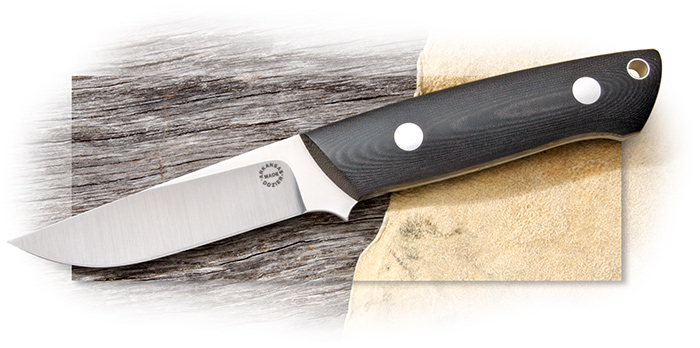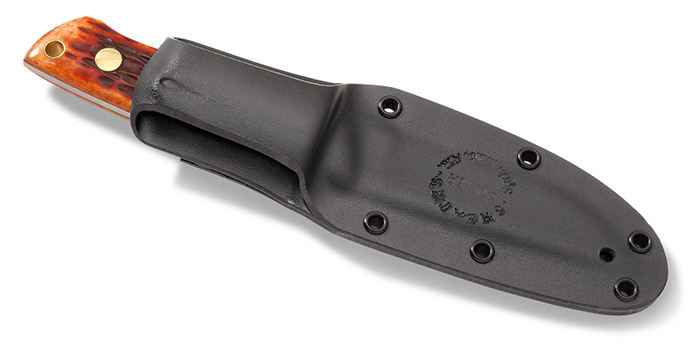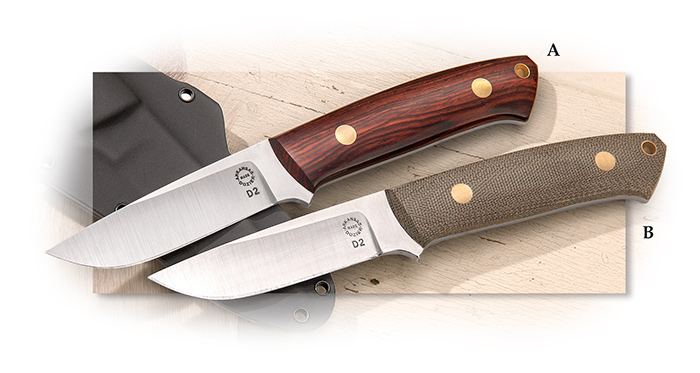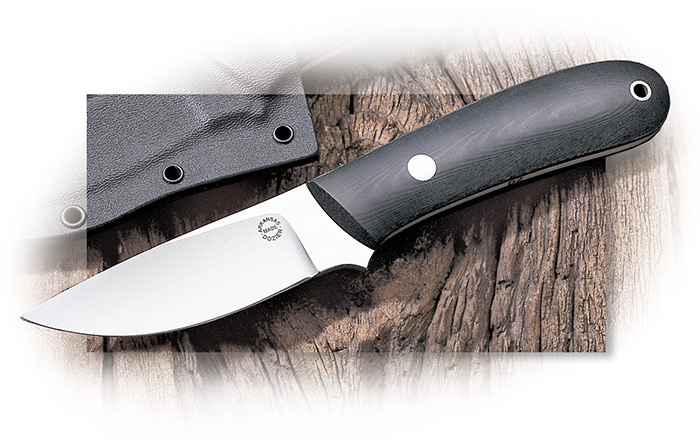Arkansas Made Dozier Slim Outdoorsman - Black Rucarta Handle - Vertical Sheath
Item #: DK-4BRHV
$240.00
Bob Dozier has been one of America's foremost makers of handmade knives since about 1968. He makes some of the finest and most practical handmade knives you'll find. For many years, Bob made highly finished knives for sale to the public while making reasonably priced knives for his fellow iron-workers. When he returned to full time knifemaking about 1988, it only took him a year of making highly finished knives to decide that what he really wanted to do was make the kind of knives he makes today. A Dozier knife will work all day, and still have a better edge than most knives you can buy. Each Dozier fixed blade knife includes the finest Kydex® sheath in the world, fitted to your knife.
This handsome handle material, a black Rucarta™, is very strong and very durable. Bob has chosen to use it on his Slim Outdoorsman. Hand ground from high-carbon, high-chrome D2 tool steel, hardened to 60-61 Rc., it will hold an edge and out cut anything you are likely to compare it to. With a 3-1/2" satin finish blade (less than 3/16" thick), it has a total length of 7-1/2" and weighs 3.3 oz. This knife comes with a vertical Kydex® belt sheath.
Option
Dozier Slim Outdoorsman-Black Rucarta Handle-Vertical Sheath
Low stock. Call for availability.
Option
Dozier Slim Outdoorsman-Black Rucarta Handle-Left Vertical Sheath
ALLOW 3 TO 5 MONTHS FOR DELIVERY
Option
Dozier Slim Outdoorsman-Black Rucarta Handle-Vertical Sheath
-
TypeFixed
-
BladeUpswept
-
Blade Length3-1/2″
-
Blade SteelD2
-
Rockwell61-62
-
HandleBlack Rucarta®
-
TangFull
-
Overall Length7-1/2″
-
Weight3.3 oz.
-
SheathVertical Kydex®
-
OriginUSA
Arkansas Made Dozier
Bob Dozier made his first knives when he was only twelve or thirteen years old. He told me the other day that after those few knives, he did not make another until he was about twenty-three and working as a rough neck in the oil fields in Louisiana. He talked about that first simple knife and then told a story about a co-worker asking to come to watch him make knives. Bob had made several knives by then and had created a small rough shop. He said the man stayed and watched until the knife was finished which took most of the day. When it was finished, he asked to look at it. After handling it for a while, he asked Bob how much he wanted for it. Without giving it any thought, Bob says he said $12.50. The man pulled out twelve one dollar bills and two quarters, laid them on the bench, got in his truck and left. Bob went in the house and told his wife he had just sold a knife which took him most of the day to make for $12.50. But, he told me, at that moment he knew he was going to be a knifemaker. That was about 1963.
If you had the opportunity to look through Bob’s collection of his old knives, you would find that he has made many different kinds of knives; hunters, Bowies and fighters, and more recently folders. You can definitely see a relationship between a pair of fighting knives he made in those early years and the practical, utilitarian fighters that began to appear from handmade knifemakers and knife manufactures from the late 1960s and became tremendously popular during the Viet Nam War era. These knives used to be called fighting knives. Today they are called Tactical Knives.






